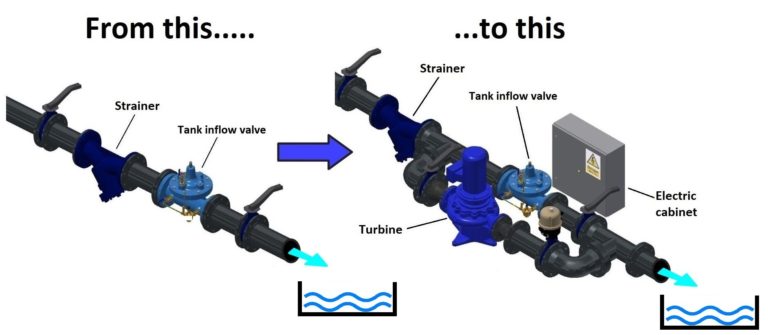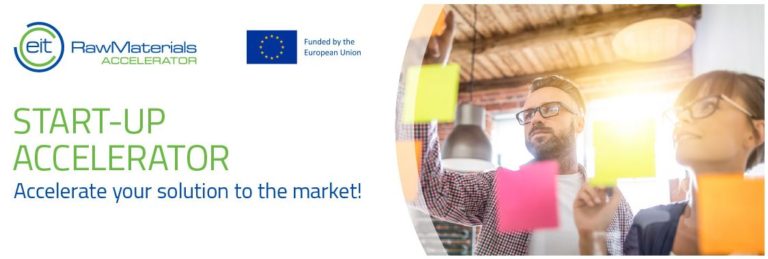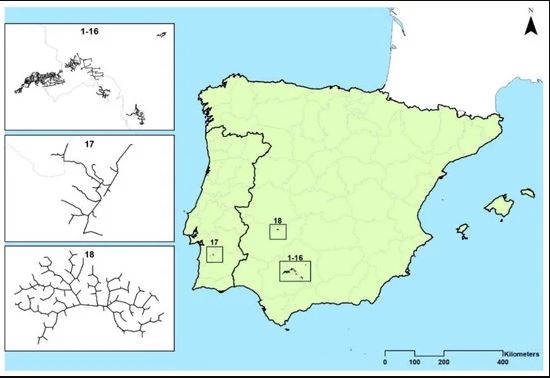How Easy Hydro turbines recover energy from on/off or ballcock inflow valves
Most large industrial water consumers are required to connect to the mains through a break tank in order to avoid backflows into the water distribution network. The inflow into such tanks is commonly regulated by a pilot or ball-operated inflow valve according to the level in the break tank itself. However, this approach is energy wasteful and highly inefficient since a stream of pressurized water is being brought to atmospheric pressure in the open-air tank before being distributed to the various industrial processes either by gravity or by further pumping.
An alternative method consists of using small-scale and modular hydropower turbines which can be placed in a bypass of a tank inflow valve and thus transform the dissipated pressure into usable electricity that can be consumed locally or exported to the grid. The type of turbine proposed is reliable and widely tested and consists of standard pumps running in reverse as turbines which only cost a fraction of a conventional custom-made hydro turbine.



